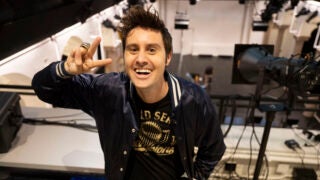Can student-athletes maintain their fitness for life?
USC researchers evaluate current exercise habits of student-athletes compared to their non-athlete peers
Student-athletes may be champions of fitness in college, but a new USC study suggests that their postgraduate health is at risk of being no better than fellow alumni who never made the team.
The study is part of an initiative to equip student-athletes with solid foundations to maintain strong, healthy lifestyles long after their last competition. It is the first of a series of studies by the researchers to be published this year.
Athletes need guidance in how to transition to sustainable exercise for the rest of their lives beyond their athletic careers.
Shawn Sorenson
In this study, USC researchers evaluated the current exercise habits of student-athletes compared to their non-athlete peers and how those behaviors differed after graduation. They found that, unlike earlier generations of athletes who exercised more throughout their lives, modern athletes are more likely to focus on intensive, specialized training programs early in life that may not be sustainable as they get older.
“Athletes are people who feel like they know how to work out, but most really have no idea how to make healthy exercise a part of their everyday lives,” said Shawn Sorenson, the study’s lead author and an adjunct assistant professor at the USC Division of Biokinesiology and Physical Therapy. “They need guidance in how to transition to sustainable exercise for the rest of their lives beyond their athletic careers.”
A comprehensive wellness program
In partnership with USC Athletics, Sorenson and his colleagues helped build a comprehensive student-athlete health and wellness program — Trojan Lifetime Champions (TLC) — to assist USC student-athletes in achieving the best in both near-term performance and long-term well-being.
“College sports can be an outstanding foundation for lifelong health and fitness, but athletes need specific guidance to transition from competitive training to healthy, sustainable exercise. In most cases, those are fundamentally different things,” Sorenson said. “This is a call to action for intercollegiate athletic programs that have an important opportunity and responsibility to meet this need.”
Researchers examined a wide range of health, quality of life and exercise variables among current and former students of USC, an NCAA Division I school that has produced more Olympians and gold medalists than any other university in the country. The researchers surveyed 496 current and former varsity athletes and non-athlete students between the ages of 17 and 84 to assess their weekly exercise habits.
Not surprisingly, current athletes are very active, averaging more than 15 hours of exercise per week — nearly four times as much as current non-athletes, who exercised an average of four hours per week, researchers found. A vast majority of current student-athletes (86 percent) met the American College of Sports Medicine (ACSM) healthy guidelines of 150 minutes of aerobic exercise and two strength-training sessions per week.
Not so for former athletes. Among both younger (average age: 33) and older alumni (average age: 58), just 40 percent met the ACSM standard, making the fitness levels of former athletes no different than their non-athlete peers.
“This was probably the most surprising, counterintuitive result from our study,” Sorenson said. “As people got older, we expected to see gradually narrower differences in exercise between athletes and non-athletes. Instead, we saw a cliff. As soon as the athletes left college, their exercise behaviors looked just like everyone else’s.”
As a result, many former athletes have found that their aging physiques aren’t any more forgiving than the rest of us.
False assumptions for current athletes
Previous studies, Sorenson noted, focused on male athletes from the early-to-mid 20th century and found that those men were generally healthier, exercised more throughout their lives and had less cardiovascular disease than their non-athlete peers. But those findings have lingered for so long as to become false assumptions for today’s athlete, Sorenson said. In this modern world of diverse, highly specialized, intensive year-round sports, the exercise and training is different, as are the athletes.
Although former athletes in the study had more musculoskeletal health concerns (e.g., joint pain) than non-athletes, in general this did not explain their lack of exercise, Sorenson said.
“We found no association between joint health concerns and exercise behavior, and health-related quality-of-life was similar between alumni athletes and non-athletes,” Sorenson said. Both athletes and non-athletes who met the ACSM guidelines had better cardiovascular health.
The study, “Life Span Exercise Among Elite Intercollegiate Student Athletes,” was published online in Sports Health: A Multidisciplinary Approach on May 9.
Additional findings of the study included:
• Seventy-seven percent of current college athletes described exercise as “very important” in their lives, compared to just 16 percent of non-athletes. Exercise was “very important” among only 59 percent of ex-athletes, a percentage that was similar among all alumni.
• Non-athletes had similar exercise behavior and attitudes across their life span.
• Alumni who met ACSM healthy exercise guidelines had significantly better cardiopulmonary health, regardless of whether or not they participated in college sports.
Sorenson sees the TLC program as an ideal model for translating interdisciplinary research into practice for the immediate benefit of student-athletes.
TLC included workshops to educate student athletes on health-related challenges of postcollege transitions — including exercise, nutrition and health care — and equip them with proactive strategies and resources to be successful beyond their college years.
The results were overwhelmingly positive: Ninety percent of participating student-athletes reported an increased awareness of available health and wellness resources, 100 percent reported a better understanding of a proactive vs. reactive health approach and 96 percent recommended the TLC program to fellow student-athletes.



